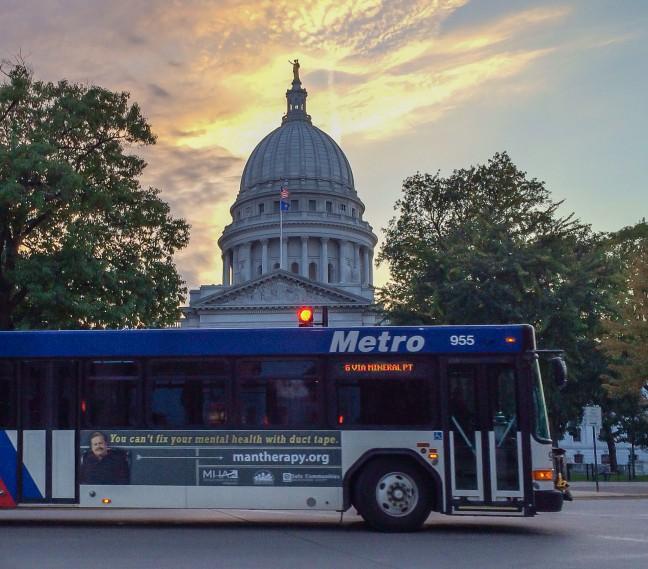The city of Madison is known for its charm, beautiful lake views, infectious school spirit and, of course, its Metro bus system.
There are countless stories among University of Wisconsin students of missing the bus to class, taking the wrong bus miles outside of the city, and not being able to fit on a very full bus. Unfortunately, the latter is a common occurrence in inclement weather, when campus buses can fill up very quickly.
What many UW students don’t realize is the bus system in Madison is not just a matter of convenience. For many Madison residents, the bus is the only way to get to and from work.
Thea Bach, a Madison resident who cannot drive due to a vision issue, said the bus is critical to get to her job as a nurse, though the commute took up to two hours. She ended up moving to be within walking distance of her job, though she now relies on her husband to drop her off at her new job in Middleton, which would also be a two-hour commute via bus.
Many Madison residents like Bach are reliant on the bus system, as they are unable to utilize other means of transportation. This is especially true for those in low-income families, for whom buying a car or ordering an Uber every day is not financially feasible.
Thankfully, Mayor Satya Rhodes-Conway just released the 2020 Capital Budget & Capital Improvement Plan Tuesday, which outlines a plan to implement a Bus Rapid Transit System by 2024. The goal of the BRT system is to “increase the capacity of the existing Metro system while decreasing ride times.”
According to a 2013 study by the Madison Planning Organization, ride times for the Capitol Square could be reduced by 35% with the new BRT system. This is a personal matter for Rhodes-Conway, as she is a long-time bus rider and often uses the bus to get to work.
“Business as usual isn’t acceptable now,” Rhodes-Conway said.
No matter where bus riders come from, however, the reliability and availability of the buses is important more now than ever. According to the Metro 2018 Annual Report, Metro ridership increased by 3.2% in 2018, resulting in a total of over 13.2 million rides.
Another concern is that with the city’s population growth, single-car usage is no longer going to be sustainable in the future. According to Transportation Director Tom Lynch, the city of Madison has approved 3.3 million square feet of new building space in the last two years alone, which could result in about 60,000 daily car trips. There is a limited amount of parking on the isthmus as is, but as the city continues to grow, the availability of parking will continue to decrease.
Overall, it seems Rhodes-Conway’s initiative is the first step toward overtaking a major issue in the city of Madison that may only continue to worsen otherwise. But one step toward improving Madison’s public transportation system is a step in the right direction.
Courtney Degen (cdegen@wisc.edu) is a junior majoring in political science and journalism.


